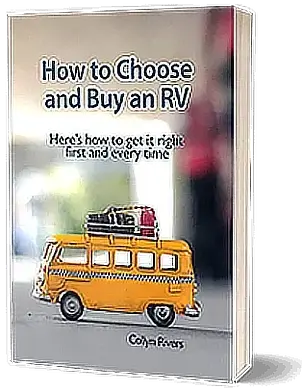Click on image for full view and caption
Unlike cars, a well-made caravan may last for decades with only minor areas that need attention.
Buying used caravans
Collyn Rivers
Helpful tools when conducting a used caravan inspection include a torch, a damp meter, a ladder and a tape measure. If you can, take along someone who knows about caravans.
Unlike cars, a well-made caravan may last for decades with only minor areas that need attention. Not all are like that, however.
Is your tow vehicle capable of towing this caravan?
While many do so (but may then regret it) it is safer to keep the weight of the caravan to that of the towing vehicle. The first thing to check is the caravan‘s approximate empty weight. It’s so-called Tare Mass (i.e. weight) is likely to be shown on a plate attached to its chassis. It is unlikely to be accurate but gives you a rough idea. A typical caravan‘s fully loaded weight is usually 200–300 kg (440–660 lb) higher. The required tow ball mass is about 10% of that laden weight, Check if that is within your tow vehicle’s ability. More on p13, Towing your caravan
Background & documentation
Is the caravan‘s size, style and layout suitable for your needs?
Who made the caravan — and when?
What is the previous ownership history?
Where has the caravan been kept and where has it been (if known)?
Does the manufacturer still exist and are spare parts for this caravan still available?
What documentation is provided with the caravan — you really need a weigh bridge certificate, gas certificate and electrical certificate. Does the caravan‘s VIN plate match with the documentation provided?
Is there a service history and are instruction manuals for the caravan and major items available?
Does it have a wood or aluminium frame?
Is the caravan‘s condition reasonably consistent with its age?
Checking the exterior
Are there any signs of repairs, scratches, dents, hail damage, bowing, repainting?
Is there any sealant around the windows (a give-away that there may be water leakage)?
Check that all windows open and close and are in good condition.
Check under the caravan for axle or suspension rusting or damage, cracks or deformation. Are the water tanks, wiring and lighting in good condition? Does the caravan look as though it has been off-road?
Tyres: do the tyres have ample tread. How old are they (no matter if barely worn, a tyre’s maximum life is 7–10 years. If older, they will need replacing. Are the correct tyres fitted (refer to the compliance plate re their correct size). Is there a spare tyre?

Checking the interior
Is there any smell of dampness (or use of chemicals) to disguise that and/or other smells?
Are there any signs of ants or other insects inside the caravan? Ants are a giveaway — they are attracted by damp or rotting wood. If there is any sign of ants the caravan timber may be rotting. Or there may be a water leak.
Check walls, ceiling and bench tops carefully (especially around windows and ventilation hatches). Look for dampness, discolouration, bulges, scratches, indents, holes or evidence of repainting or repair.
Cupboards: check for daylight between cupboards and walls, loose or missing screws, doors not opening or closing or broken latches.
Check for any damage to beds, mattress and storage area.
Is the hob/grill/oven/microwave/fridge clean and working?
If there is an ensuite check that it is in good condition, e.g. is toilet/shower/hot water working? Are there any signs of leaking, mould or poor ventilation?
Pop tops: check the roof can be raised and lowered easily, that all struts are in good condition and that any canvas is not damaged or discoloured.
Check the door opens, closes and locks as intended. How many keys are provided?
Awning: if there is an awning, check that it opens and closes properly and check its canvas condition.
Be realistic about what to expect for the van’s age, but do not be afraid to ask the seller to correct any minor matters prior to sale. If the problem appears significant, look elsewhere. There are always others for sale!
What to check – general
A-Frame: Is the tow hitch in good condition?
Is electrical wiring present and in good condition?
Is the handbrake, chains, jockey wheel present and working?
If it is safely possible, inspect the roof for leaks, tree/branch, solar module and TV aerial damage.
Check that all electrics (including battery) are in good condition and that all lights and appliances work.
Check the condition of gas bottles, regulator and piping. ◼️
Buying used Caravan – what to check has been prepared with the kind support of the Caravan Council of Australia.
Collyn has a book on buying a caravan or motorhome. Appendix 4 includes a checklist: on Amazon

9 Spring 2024
, p
20









